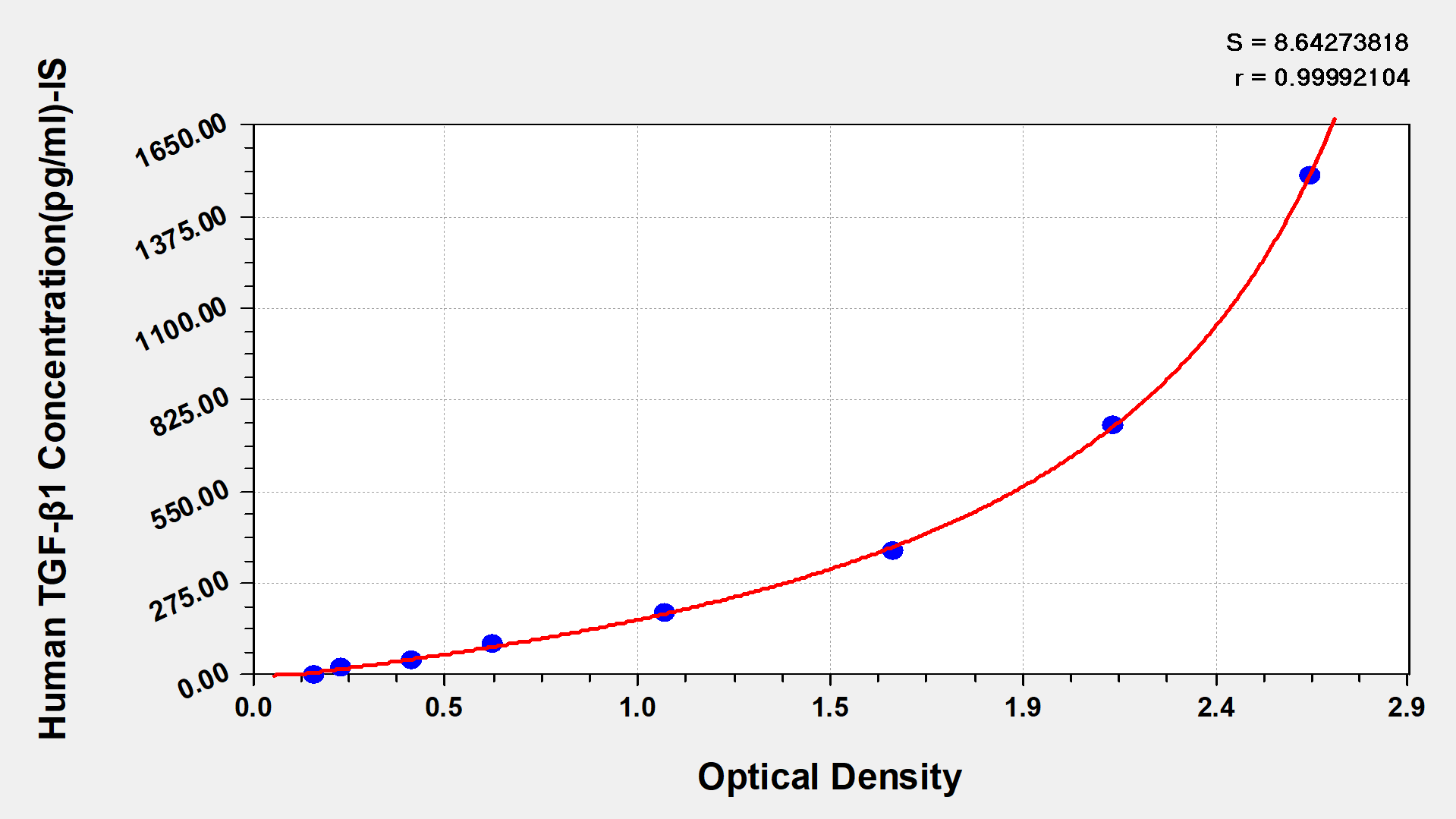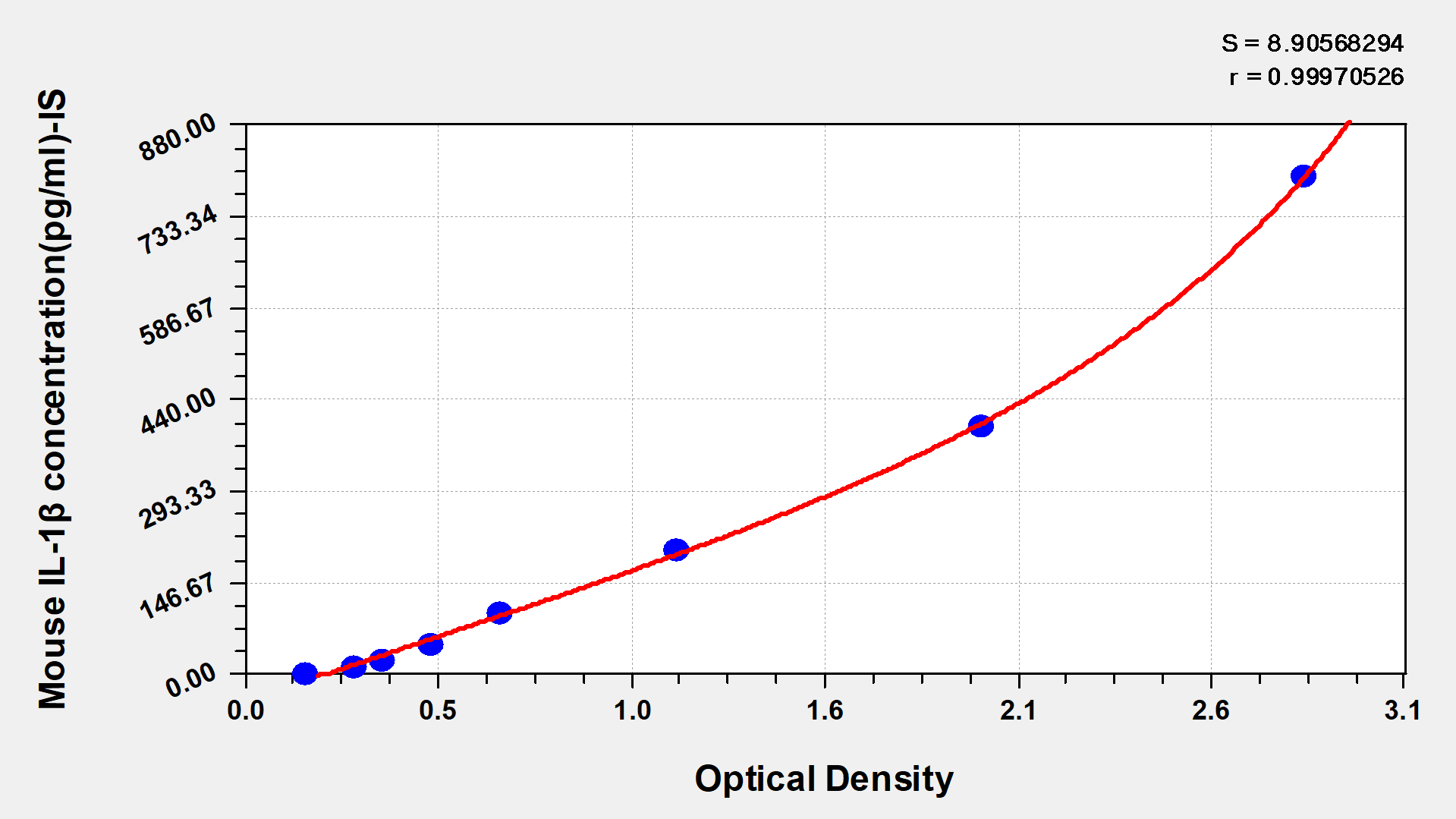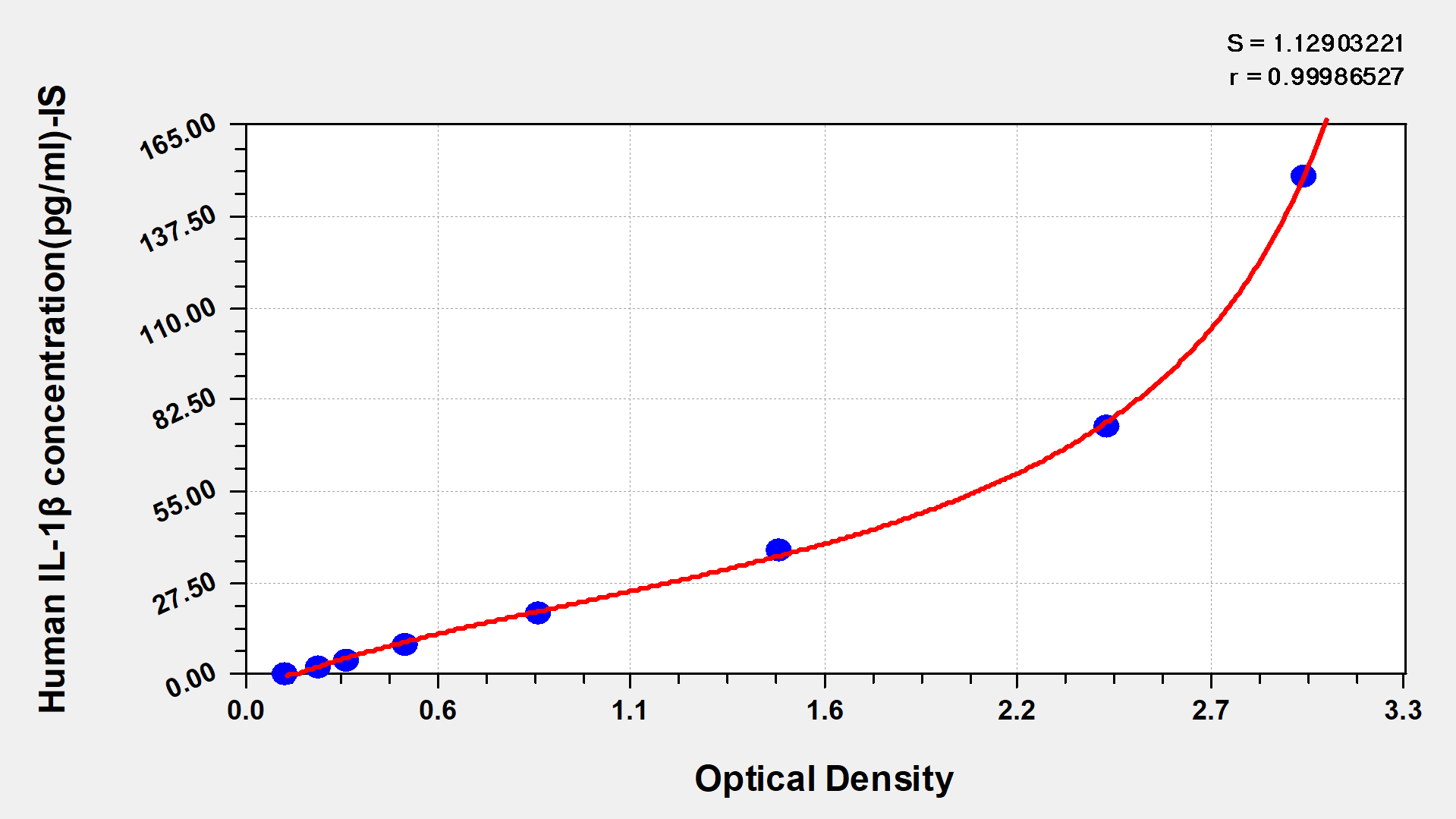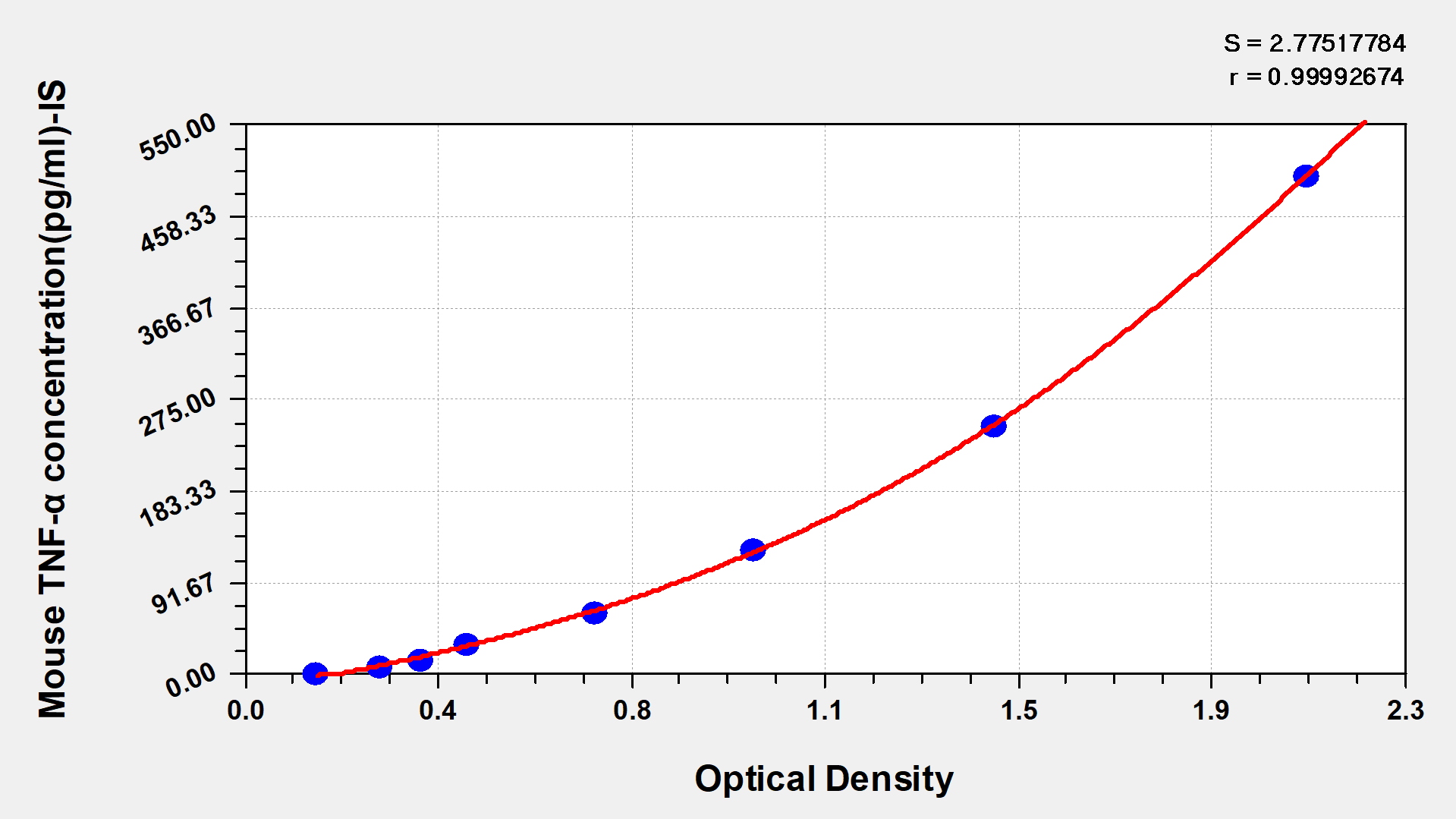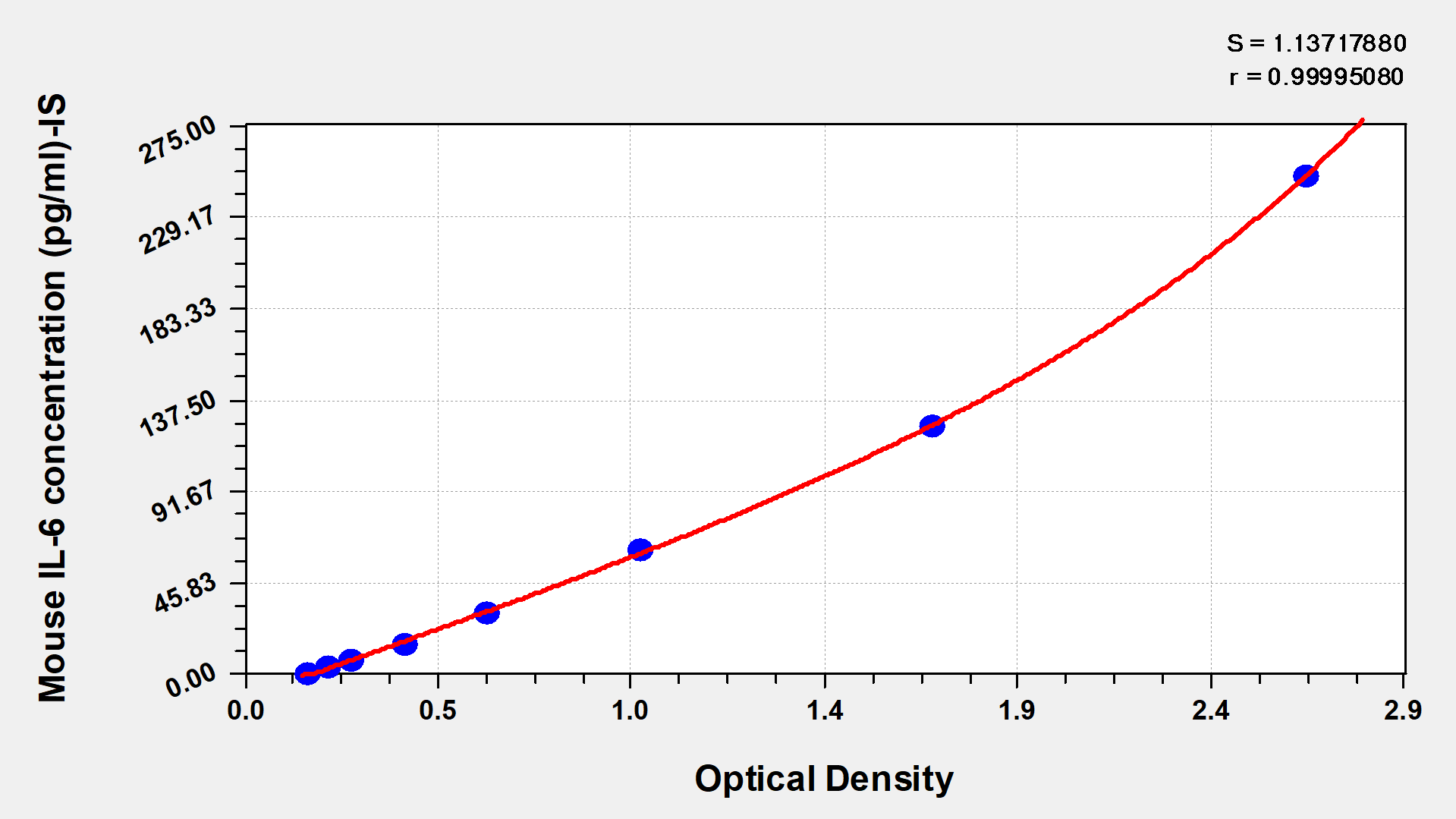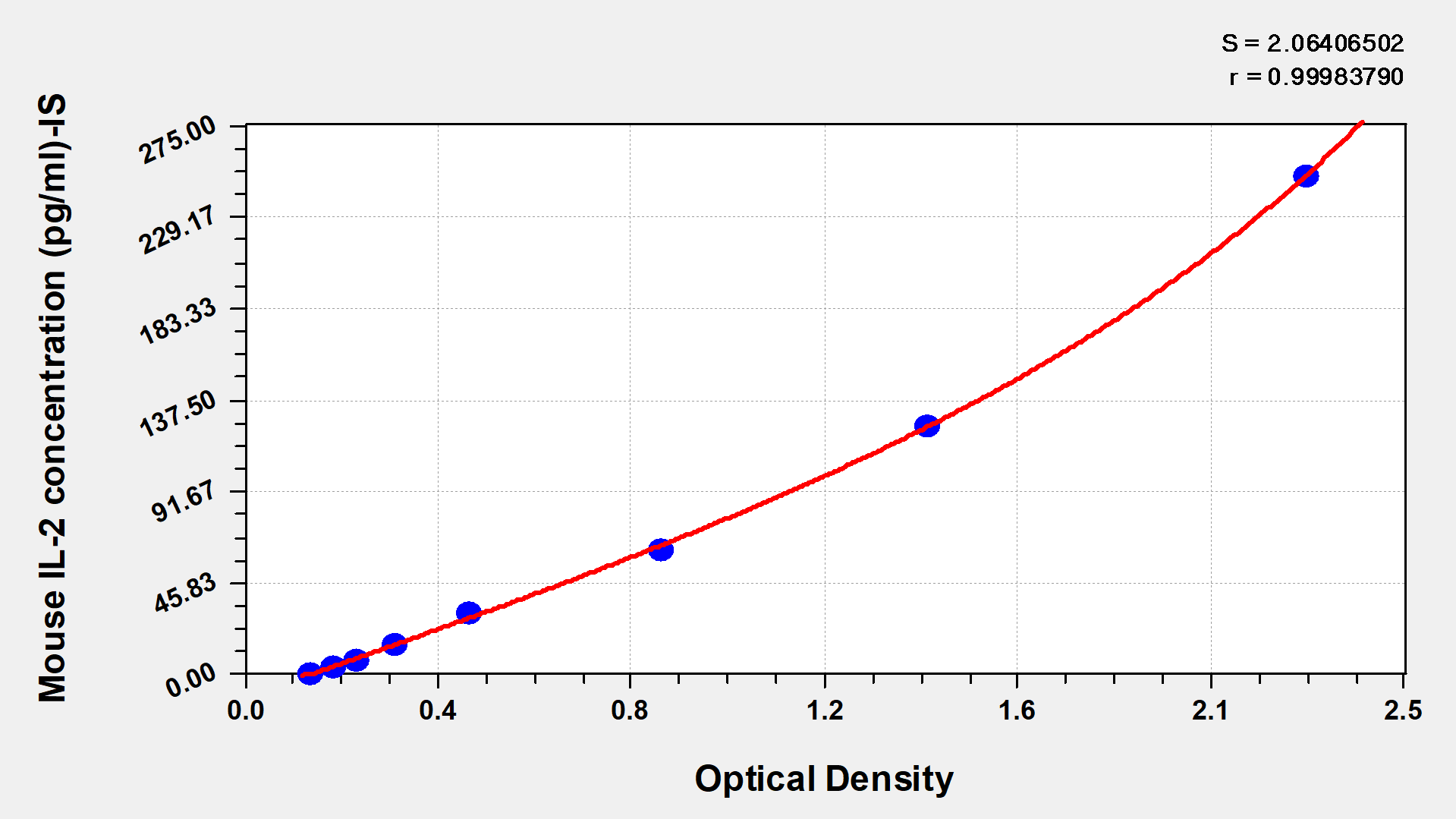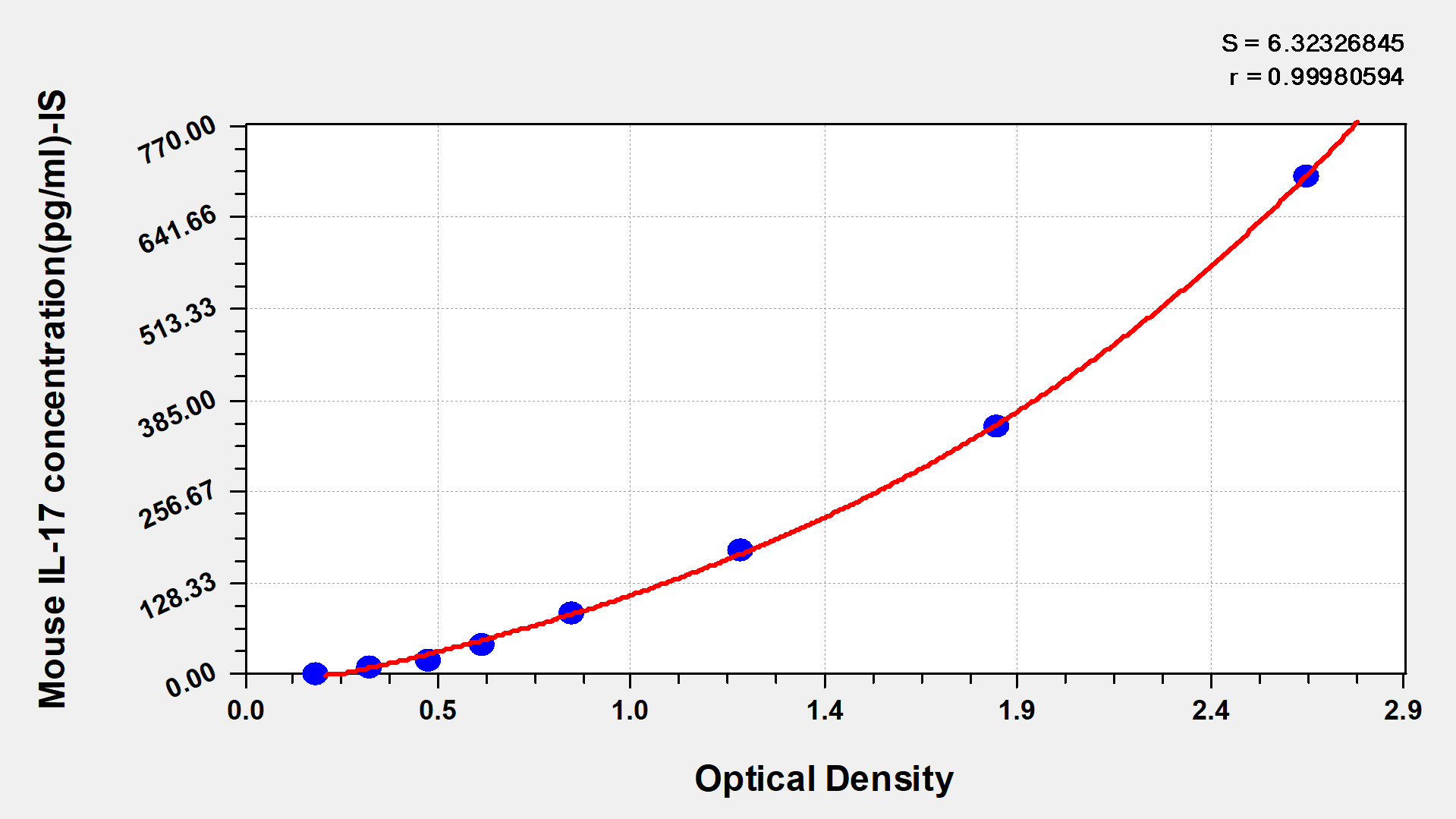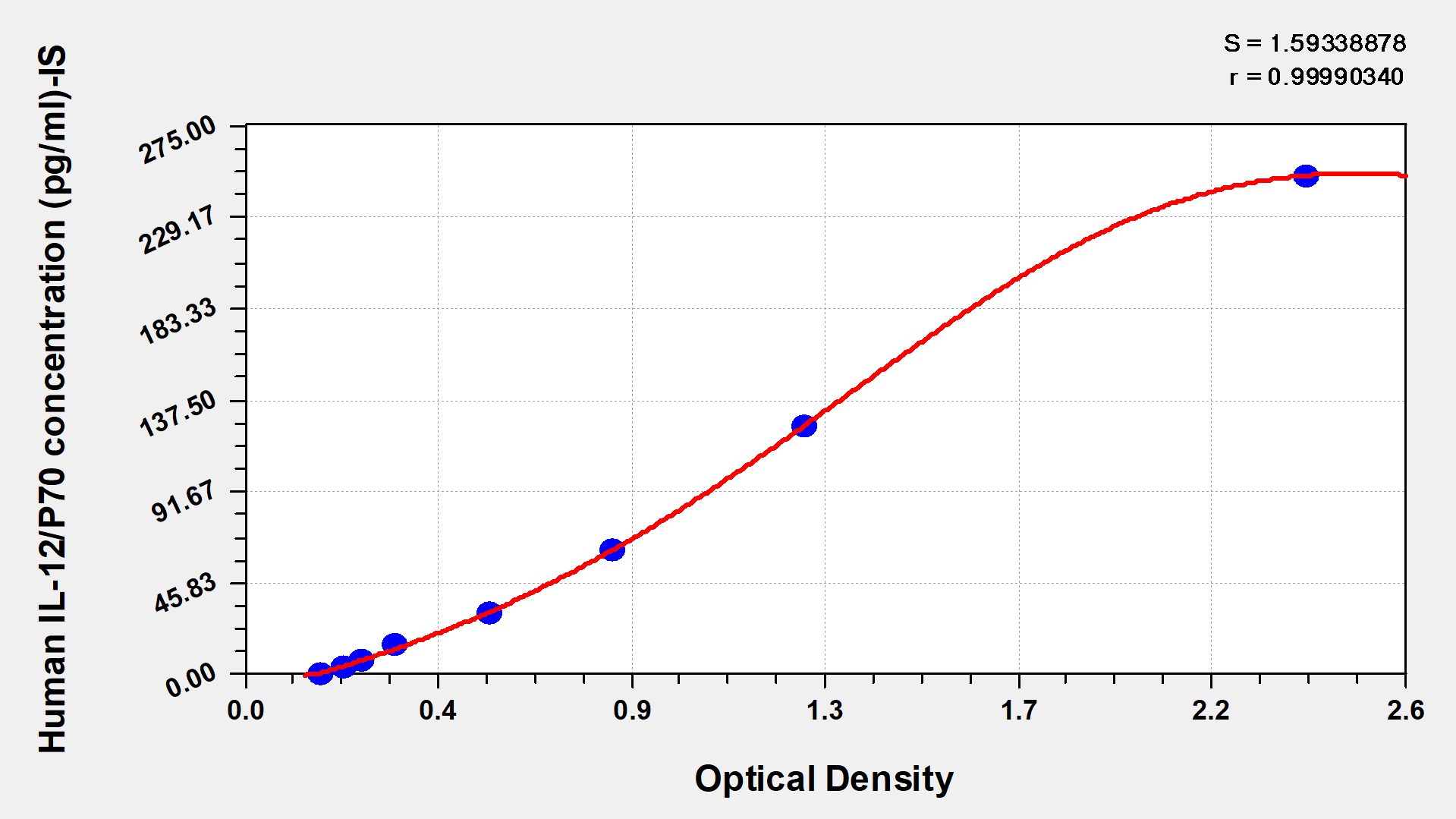-
中文名稱:大鼠過氧化物酶體增殖物激活受體α(PPAR-α)酶聯免疫試劑盒
-
貨號:CSB-E09755r
-
規格:96T/48T
-
價格:¥3900/¥2500
-
其他:
產品詳情
-
產品描述:大鼠過氧化物酶體增殖物激活受體α(PPAR-α)酶聯免疫試劑盒(CSB-E09755r)為雙抗夾心法ELISA試劑盒,定量檢測血清、血漿、組織勻漿、細胞裂解物樣本中的PPARA含量。PPARA,即過氧化物酶體增殖物激活受體α,是一種核受體,主要在肝臟、心肌、腎臟和骨骼肌等組織中表達。它參與調節能量代謝、氧化應激和炎癥等多種生物活動,與動脈粥樣硬化、冠心病、心肌梗死和心力衰竭等疾病密切相關。PPARA的研究機制涉及其與YAP-TEAD信號通路相互作用,促進肝增大和肝再生,以及通過調節血脂代謝和炎癥反應來影響心血管疾病的發生發展。試劑盒檢測范圍為0.312 ng/mL-20 ng/mL,可支持脂代謝調控機制探索、藥物干預效果評估等基礎研究。本品僅用于科研,不用于臨床診斷,產品具體參數及操作步驟詳見產品說明書。
-
別名:Ppara ELISA Kit; Nr1c1 ELISA Kit; Ppar ELISA Kit; Peroxisome proliferator-activated receptor alpha ELISA Kit; PPAR-alpha ELISA Kit; Nuclear receptor subfamily 1 group C member 1 ELISA Kit
-
縮寫:
-
Uniprot No.:
-
種屬:Rattus norvegicus (Rat)
-
樣本類型:serum, plasma, tissue homogenates, cell lysates
-
檢測范圍:0.312 ng/mL-20 ng/mL
-
靈敏度:0.078 ng/mL
-
反應時間:1-5h
-
樣本體積:50-100ul
-
檢測波長:450 nm
-
研究領域:Metabolism
-
測定原理:quantitative
-
測定方法:Sandwich
-
精密度:
Intra-assay Precision (Precision within an assay): CV%<8% Three samples of known concentration were tested twenty times on one plate to assess. Inter-assay Precision (Precision between assays): CV%<10% Three samples of known concentration were tested in twenty assays to assess. -
線性度:
To assess the linearity of the assay, samples were spiked with high concentrations of rat PPAR-α in various matrices and diluted with the Sample Diluent to produce samples with values within the dynamic range of the assay. Sample Serum(n=4) 1:1 Average % 96 Range % 89-100 1:2 Average % 94 Range % 88-98 1:4 Average % 96 Range % 91-100 1:8 Average % 95 Range % 87-101 -
回收率:
The recovery of rat PPAR-α spiked to levels throughout the range of the assay in various matrices was evaluated. Samples were diluted prior to assay as directed in the Sample Preparation section. Sample Type Average % Recovery Range Serum (n=5) 92 86-96 EDTA plasma (n=4) 90 85-96 -
標準曲線:
These standard curves are provided for demonstration only. A standard curve should be generated for each set of samples assayed. 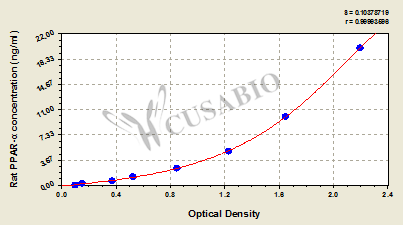
ng/ml OD1 OD2 Average Corrected 20 2.183 2.177 2.180 2.068 10 1.654 1.627 1.641 1.529 5 1.240 1.211 1.226 1.114 2.5 0.859 0.842 0.851 0.739 1.25 0.546 0.513 0.530 0.418 0.625 0.381 0.373 0.377 0.265 0.312 0.166 0.157 0.162 0.050 0 0.111 0.113 0.112 -
數據處理:
-
貨期:3-5 working days
引用文獻
- Effects of Exercise and Konjac on Lipid Metabolism and Mechanism in Obese Rats L Ruan, Z Lv, G Wang, S Li, K You, M Chen, S Liu, L Pu,bioRxiv,2025
- Vitamin D modulates hepatic microRNAs and mitigates tamoxifen‐induced steatohepatitis in female rats EA Abd El‐Haleim,Fundam Clin Pharmacol,2021
- Preventive effect of trans-chalcone on non-alcoholic steatohepatitis: Improvement of hepatic lipid metabolism ElhamKarimi-Sales, et al,Biomedicine & Pharmacotherapy,2018
- Infarct-remodelled hearts with limited oxidative capacity boost fatty acid oxidation after conditioning against ischaemia/reperfusion injury Lou PH et al,Cardiovasc Res,2013
相關產品
靶點詳情
-
功能:Ligand-activated transcription factor. Key regulator of lipid metabolism. Activated by the endogenous ligand 1-palmitoyl-2-oleoyl-sn-glycerol-3-phosphocholine (16:0/18:1-GPC). Activated by oleylethanolamide, a naturally occurring lipid that regulates satiety. Receptor for peroxisome proliferators such as hypolipidemic drugs and fatty acids. Regulates the peroxisomal beta-oxidation pathway of fatty acids. Functions as transcription activator for the ACOX1 and P450 genes. Transactivation activity requires heterodimerization with RXRA and is antagonized by NR2C2. May be required for the propagation of clock information to metabolic pathways regulated by PER2.
-
基因功能參考文獻:
- MicroRNA-21 regulates peroxisome proliferator-activated receptor alpha expression in cardiorenal syndrome type 4, to alter cardiac pathology. PMID: 28760335
- The results suggested that PPARalpha activation may exert a protective effect against ischemia/reperfusion in the myocardium, at least in part via endoplasmic reticulum stress inhibition. PMID: 29568903
- Repeated activation of PPARalpha induced a decreased phosphorylation of beta2*nAChRs that was accompanied by a switch in firing pattern of spontaneously active dopamine cells. PPARalpha activation enhanced dopamine D1 receptor signaling in the nucleus accumbens shell (NAcS). Long-term PPARalpha stimulation restored dopamine signaling to sucrose consumption in the NAcS and appetitive motivation. PMID: 27457507
- findings unravel the mechanism of Arjunolic acid action in regressing hypertrophy-associated cardiac fibrosis by assigning a role of Arjunolic acid as a PPARalpha agonist that inactivates non-canonical TGF-beta signaling. PMID: 28821620
- Roux-en-Y gastric bypass upregulates striatal dopamine 1 receptor (D1R) expression specifically under high-fat diet feeding conditions. PMID: 28065827
- Metabolism of methiocarb and carbaryl alters PPAR alpha agonist activity. PMID: 27665777
- Ultraviolet absorber, 2-(2'-hydroxy-3',5'-di-tert-butylphenyl)benzotriazole exerts its hepatotoxicity through the PPARalpha signal pathway and the sex-related difference in PPARalpha expression may contribute to the sex-related difference in susceptibility to hepatotoxicity. PMID: 27665778
- Suggest the therapeutic effects of berberine on angiotensin IV-induced proliferation in cultured vascular smooth muscle cells are partially partially mediated by the PPARalpha-NO signalling pathway. PMID: 27927051
- PPARalpha-stimulation prevents overexpression of pro-inflammatory molecules in a model of acute myocardial infarction. PMID: 27050838
- UA inhibited the exaggerated spinal cord inflammatory response to peripheral inflammatory stimulation in HFDinduced obesity by restoring downregulated spinal PPARalpha, preventing peripheral inflammation and inflammatory hyperalgesia. PMID: 27108888
- PPAR-alpha-FGF21 induction by docosahexaenoic acid (DHA) and thyroid hormone (T3) may involve ligand activation of PPAR-alpha by DHA and enhanced expression of PPAR-alpha by T3. PMID: 27248050
- the results confirm the relation between the development of insulin-resistance with the over-expression of SREBP-1c, the reduction of PPAR-alpha expression and the predominance of large and triglyceride over-enriched VLDL circulating particles. PMID: 25796423
- GW0742 has the ability to improve glucose homeostasis in diabetic rats through activation of PPAR-delta. PMID: 26508837
- Stimulation of PPAR-alpha by medium chain triglycerides promotes reverse cardiac remodeling in chronic pressure overload. PMID: 25976666
- Age-related sensitivity to endotoxin-induced liver inflammation is mediated by IL-1beta-induced lipid accumulation in hepatocytes through the dysregulation of PPARa and SREBP1c. PMID: 25847140
- Fructose feeding significantly decreased mRNA levels for PPAR alpha and CPT1A. PMID: 26519879
- Data suggest that expression of PPARA in liver can be regulated by dietary factors; here, dietary supplementation with 5-caffeoylquinic acid up-regulates expression of PPARA and prevents high-fat diet induced obesity. PMID: 25186103
- Stimulation of PPARalpha by clofibrate prevents an increase in the activity of renin-angiotensin system and promotes the production of vasodilator substances in myocardial ischemia. PMID: 25658458
- Tau supplementation prevented obesity and hepatic TG deposition by upregulating MTP mRNA, ameliorating hepatic lipid efflux, and consequently enhancing PPAR-alpha which increases lipid oxidation through ACO and CPT-1a gene expressions. PMID: 26092479
- Findings suggest that diet-induced obesity causes down-regulation of spinal PPARalpha, which facilitates the susceptibility to peripheral inflammatory challenge by increasing inflammatory response in the spinal cord. PMID: 25135355
- results demonstrate that inhibition of PPARalpha attenuates the beneficial effects of metformin on mitochondria in acute IR. PMID: 22837722
- In cardiomyocytes the protective effects of metformin-induced AMPK activation against oxidative stress converge on mitochondria and are mediated, at least in part, through the dissociation of PPARalpha-CypD interactions. PMID: 25617357
- the phosphorylation of ERK1/2 inhibited the expression and activity of SCAD through the PPARalpha signaling pathway, which induced the development of pathological cardiomyocyte hypertrophy. PMID: 25636810
- PPARalpha contributes to regulation of blood pressure and vascular reactivity in SHR, and clofibrate-mediated reduction in blood pressure and proteinuria is probably through increased NO production. PMID: 24562305
- data uncover HILPDA as a novel PPAR target that raises hepatic triglyceride storage via regulation of triglyceride secretion. PMID: 24876382
- Peroxisomal multifunctional enzyme type 1 (rpMFE-1) undergoes Posttranslational Modification on several N epsilon-Lys residues under PPAR-alpha-mediated peroxisome proliferation. [peroxisomal multifunctional enzyme type 1] PMID: 24092543
- Systemic disorganization of functional activity of nuclear PPAR plays a key role in the molecular mechanisms of metabolic and immune disturbances in rats with inherited stress-induced arterial hypertension. PMID: 24288751
- These findings unveil novel roles for PPARalpha in mediating stress signals between hepatic subcellular stress-responding machinery PMID: 24735884
- After spinal cord injury, there is a long-lasting in the level of PPARalpha in white matter in the vicinity of the lesion site. PMID: 23958344
- Urotensin-II can protect renal tubular cells from apoptosis through PGI2-mediated PPARA and Akt activation. PMID: 23933501
- A decrease in the expression of Nrf2 and PPARalpha, together with an increase in NF-kappaB expression, was observed in the renal cortex of L-NAME-induced hypertensive rats compared with control rats. PMID: 23223967
- PPAR signaling pathway is activated following ethyl tertiary-butyl ether administration which leads to tumorigenesis. PMID: 24090815
- glomerular hypertrophic responses in rats on a HFD are associated with reduced PPARdelta expression and increased p38 MAPK phosphorylation. PMID: 23592661
- Growing evidence points to PPARalpha as an additional detector of metabolic signals and altered functional demands, able to set into motion prompt responses to cope with ongoing metabolic needs and maintain cell homeostasis. PMID: 23394525
- in ischemia-reperfusion, functional interplay between the decrease in L-carnitine and the PPARalpha/PGC1alpha pathway-induced redirection of fatty acid metabolism protects mitochondria against long chain fatty acid overload PMID: 23525500
- novel differences in the regulation of lipins 1,2,3, PPARalpha, and PGC-1alpha splice variants during fasting in heart versus liver, even though the ultimate outcome in both tissues is to increase FA turnover and oxidation. PMID: 23505321
- The hypocholesterolemic functions of chlorogenic acid are probably due to the increase in fatty acids unitization in liver via the up-regulation of peroxisome proliferation-activated receptor alpha mRNA. PMID: 22674675
- Activation of PPAR-alpha played a protective role in acute pancreatitis, partially mediated by modulation of TLR pathways. PMID: 22722259
- PPARalpha plays a role in the regulation of the ubiquitin proteasome system. PMID: 23041501
- PPARalpha significantly contributes to the effects of endogenous cholinergic transmission mediated by ss2-nicotinic acetylcholine receptors on dopamine (DA) neuron excitability and to the effects of nicotine on locomotor activity, a DA associated behavior. PMID: 20570248
- PPARalpha activation improves endothelial dysfunction and reduces fibrosis and portal pressure in cirrhotic rats. PMID: 22245887
- Pharmacological activation of PPARalpha improves metabolic milieu, steatosis, ballooning, and combats NF-kappaB and JNK activation, neutrophil and F4/80 macrophage recruitment in diabetes-related NASH. PMID: 21929649
- Peroxisome proliferator-activated receptor-gamma regulates inflammation and renin-angiotensin system activity in the hypothalamic paraventricular nucleus and ameliorates peripheral manifestations of heart failure. PMID: 22083161
- PPARalpha can compete with GATA-4 binding to NFATc4 PMID: 22198280
- Abnormal expressions of FXR and PPARa may play a role in pathogenesis of estrogen-induced intrahepatic cholestasis. PMID: 21205480
- findings suggest that increased PPAR-alpha expression in OLETF rats liver is a contributory factor to the exercise-related improvements in whole-body metabolism. PMID: 21618160
- Integrated investigation of PPAR, LXR, PXR, CAR regulatory mechanisms, signal transduction and transcriptional targets will provide insights into the pathogenesis of MS and offer valuable information for designing of drugs for MS treatment. PMID: 22066269
- Evidence indicating the involvement of the saturated acylethanolamide palmitoylethanolamide in allopregnanolone synthesis through PPAR-alpha in astrocytes. PMID: 21554431
- Activation of PPARalpha protects cells in dentate gyrus and hippocampus from excitotoxic insult. PMID: 20221904
- Upregulation of apoA5 expression contributes to the triglyceridelowering effect of statins via the PPARalpha signaling pathway. PMID: 21092650
顯示更多
收起更多
-
亞細胞定位:Nucleus.
-
蛋白家族:Nuclear hormone receptor family, NR1 subfamily
-
組織特異性:Expressed predominantly in liver and kidney.
-
數據庫鏈接:
Most popular with customers
-
Human Transforming Growth factor β1,TGF-β1 ELISA kit
Detect Range: 23.5 pg/ml-1500 pg/ml
Sensitivity: 5.8 pg/ml
-
-
-
Mouse Tumor necrosis factor α,TNF-α ELISA Kit
Detect Range: 7.8 pg/ml-500 pg/ml
Sensitivity: 1.95 pg/ml
-
-
-
-



